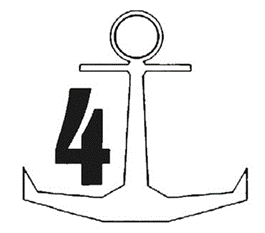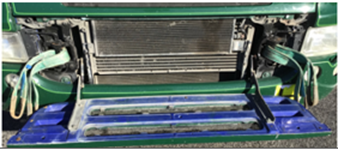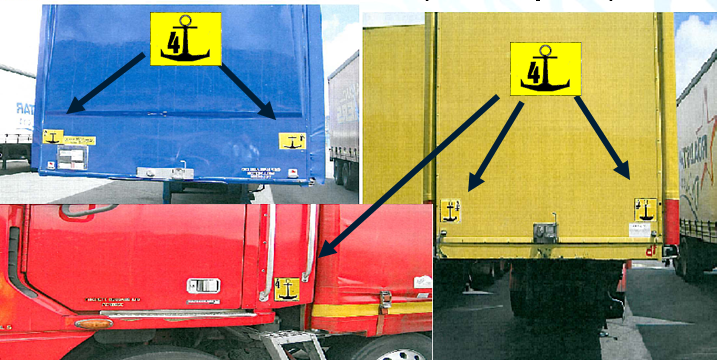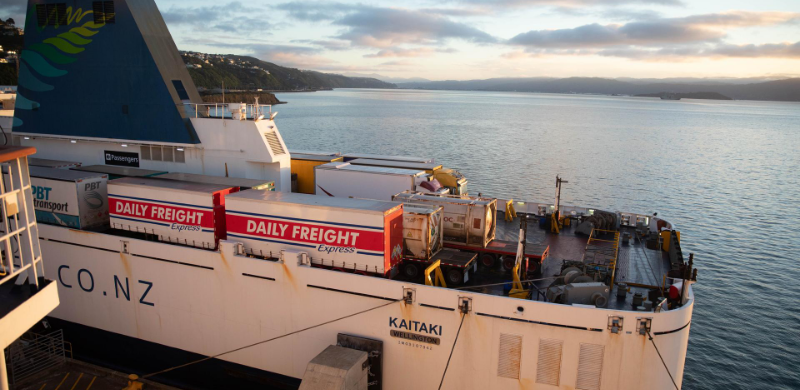Lashing Points
Most vehicles more than 3500kgs carrying a load must be fitted with approved lashing points. Below is a list of the vehicle types that are exempt from this requirement:
- Road freight, road tank and road livestock vehicles that are not intended for transport on roll-on/roll-off ships but are being freighted for delivery purposes only without payload
- Passenger vehicles including cars, mini-buses, coaches, buses, motorhomes, caravans and horse trucks
- Oversize vehicles
- Railway wagons
- Special vehicles including fire engines, tow trucks, car transporters, ambulances, horse floats or vehicles specifically designed to transport horses, boat trailers.
All other vehicles must comply.
Read more about the carriage of heavy vehicles on the Maritime New Zealand website.
If you have any questions, please call the Interislander freight team on 0800 660 670.
All heavy vehicles (in excess of 3500kg gross laden weight) travelling on Interislander services must be fitted with securing points in order to be lashed to the ferry deck to prevent movement at sea.
From 30 May 2012, an amendment to NZ Maritime Law S24B lashing requirements states that all lashing points on all trailer configurations must comply and be fitted in accordance with ISO9367 Points 1 and 2. A copy of these requirements is available from Standards New Zealand.
Lashing Compliance FAQ
If your question isn't answered then please call the booking team on 0800 660 670.
I have received a deficient vehicle notice – what does this mean?
- The vehicle has been deemed non-compliant for travel, in accordance with Maritime Rule 24B
- Masters’ discretion will apply on the day of travel.
- The vehicle may be barred from travelling if it is considered unsafe for staff to access or possible damage to unit.
- You may receive a notice for lack of anchor plates, or non-compliant lashing points, even if travel has been approved by the Master on the day – this still means vehicle is non-compliant, and the issue needs to be addressed.
To avoid this uncertainty, Interislander recommends ensuring that your vehicle is compliant.
Note: Carriage of a non–compliant vehicle is a breach of maritime rules, and the Master of the ship takes responsibility. Each Master decides on whether to accept a unit depending on safety, weather, and personal responsibility. This is termed Master’s Discretion.
What happens if I don’t comply? I’ve been allowed to travel some days then told I can’t other times.
A non – compliant unit may still be able to travel at master’s discretion, but this cannot be guaranteed. The Master of the ship takes the responsibility for the care of cargo onboard and decision sits with individual that is on shift at the time. Decision for travel approval will always be made with a safety-first focus.
Where do I position lashing points on my truck?
Lashing points should be located to ensure restraint of the vehicle and in a position that the crew can access and safely attach the lashing. They should also be placed to prevent damage to the vehicle by the lashing chains.
I have one point at the front of my truck, will that be, ok?
No, there needs to be two points for lashings to hook into, this balances tension on unit to prevent it from moving during the sailing. Travel will be at ships discretion, if two separate points are not available.
I have towing hooks in the front of my truck; can these continue to be used?
Towing sockets may be used provided they comply with the dimensional, strength and marking requirements of part 2 of NZS 5444:2005 and are included on the information plate on vehicle. Failing that, the unit will only travel at Master’s discretion.
I have compliant lashing points on my truck, but I haven’t got the information plates on. Can my truck still travel?
No, the information plates are a fundamental part of the rule. They tell the ship’s crew that your truck complies with Part 2 of NZS 5444:2005 and how many lashings are needed.
I have an empty truck which I’m transporting across Cook Strait - but it’s not a new truck. Does this need to comply?
No. If the truck is empty, it is considered a delivery trip and therefore the rule does not apply (subject to master’s discretion – if deemed conditions unsafe to travel, it will need to be rebooked)
I drive a livestock truck and bring it across empty. Do I need to have lashing points fitted?
No, if empty, it is considered a delivery trip and rule does not apply (subject to master’s discretion). If you plan on returning loaded, you will need to comply.
There are small ferry hook stickers on truck above each lashing point. Is this enough?
No, these are for indicating the position of the points. You still need to have the information plate which is in the form of an anchor with a number to indicate the number of lashing points on each side of the vehicle.
 |
In accordance of NZS5444:2005 Section 2.7 Marking
Anchor plate information marking shall appear at least on the front side of trailer. Ideally, it should be marked on all four sides of the trailer.
I have webbing lashing extension at the front of my truck which the manufacturer says meets the standard which I carry with me. Can I use them?
No. Without knowing the history of the individual lashings the ship’s crew cannot be sure of their condition and strength. While the strength of their lashing may be sufficient to meet the standard, crew need to be sure that the part of the vehicle they are attached to is also able to take the load as required.
 |
Where can I get lashing points fitted?
We recommend consulting with an engineer that specialises in modification and certification of heavy motor vehicles.
Quick Guide – Tractor Unit Lashings
Lashing points at the front of a tractor unit, need to have two points to lash from by either:
- Two separate D rings, on either side unit.
- Double eye lashing plate in the centre of the unit
Example of compliant double lashing plate:
Example of non – compliant lashing plates
Information sourced from: Safety update - Carriage of heavy vehicles on roll-on/roll-off ships May 2012 - Maritime NZ
Additional resources:
- Maritime New Zealand Advisory Circular Part 24B: Carriage of Cargoes – stowage and securing
- Maritime New Zealand Guidance Notice - Carriage of heavy vehicles on roll-on/roll-off ships
- Interislander Freight Lashing Guide PDF
For more information, please call the booking team on 0800 660 670
All heavy vehicles (more than 3500 kg gross laden weight) must be fitted with securing points in order to be lashed to the ferry's deck, to prevent movement at sea.

